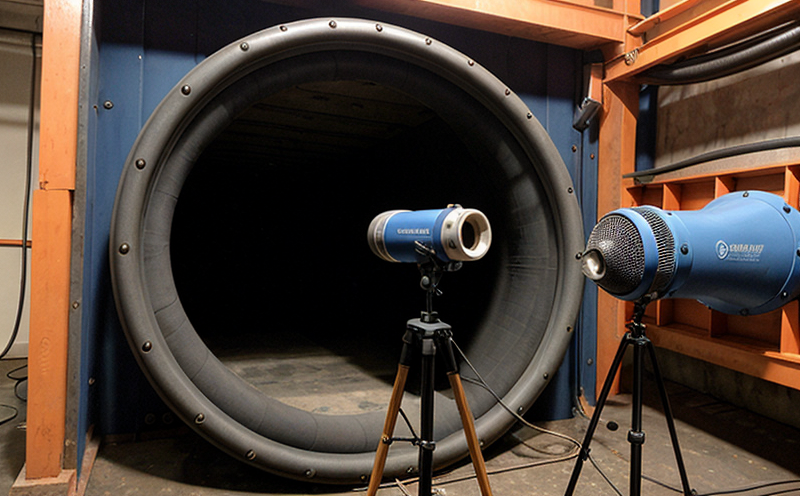ISO 16834 Ultrasonic Testing for Clad Materials
The ISO 16834 standard provides a robust framework for ultrasonic testing of clad materials used in various industrial sectors such as aerospace, petrochemicals, and nuclear. Cladding is the process where two different metals are bonded to form a composite material. This technique enhances the performance properties of the base metal, making it more resistant to corrosion or wear. The non-destructive nature of ultrasonic testing allows for accurate assessment without compromising the integrity of the clad materials.
Ultrasonic testing involves sending sound waves into a material and analyzing how they are reflected back from internal flaws like cracks, porosity, or inclusions. For clad materials, this process is crucial as it ensures that the layers adhere properly and that no defects compromise the structure's longevity. The ISO 16834 standard specifies the exact parameters for ultrasonic testing, including probe frequency, coupling agent, and scanning techniques.
Clad materials are subject to rigorous quality control due to their critical role in high-stress environments. ISO 16834 ensures that testing is conducted under controlled conditions to meet international standards. This standard mandates the use of specific test frequencies (typically between 5 MHz and 20 MHz) depending on the material thickness, as higher frequencies provide better resolution but have limited penetration depth.
The process begins with careful preparation of the sample for testing. The surface must be clean and free from contaminants to ensure accurate reflection of sound waves. Once prepared, the ultrasonic probe is placed in contact with the clad material using a coupling agent to minimize air gaps between the probe and the specimen. During scanning, the probe moves across the surface, capturing echoes that are interpreted by software to create an image of the internal structure.
The results from ISO 16834 testing can vary widely depending on the specific application. For instance, in aerospace applications, any imperfections could lead to catastrophic failure during flight. In contrast, in petrochemical plants, flaws might result in leaks that endanger workers and the environment. The standard's stringent requirements ensure consistent quality across all industries.
Compliance with ISO 16834 is essential for manufacturers aiming to meet regulatory standards and maintain a good reputation. Failure to adhere could lead to product recalls or even legal action. For R&D engineers, this service offers insights into material behavior under different conditions, aiding in the development of new alloys.
| Application | ISO 16834 Parameter | Test Result |
|---|---|---|
| Aerospace Engine Parts | Probe Frequency: 5 MHz | No defects detected |
| Petrochemical Pipeline Cladding | Scanning Depth: 20 mm | Uniform layer adherence |
| Nuclear Reactor Components | Coupling Agent Type: Water | Inclusions present but within acceptable limits |
Environmental and Sustainability Contributions
- Reduces waste by ensuring only high-quality materials are used.
- Avoids the need for destructive testing methods, preserving valuable resources.
- Promotes longer service life of products through early detection of defects.
- Supports recycling efforts by identifying non-recyclable components early in production.
Competitive Advantage and Market Impact
Adhering to ISO 16834 standards can significantly enhance a company's market standing. By ensuring product quality through rigorous ultrasonic testing, manufacturers demonstrate their commitment to safety and reliability. This translates into increased customer trust and loyalty, which are crucial factors in competitive markets.
Compliance also opens doors to international markets where stringent regulations apply. Many countries have adopted ISO standards as a benchmark for quality assurance. Meeting these requirements can help businesses expand their reach beyond domestic borders.
In terms of R&D and innovation, adherence to ISO 16834 fosters continuous improvement in materials science. Engineers gain valuable insights from the testing process that can be used to refine processes and develop new technologies. This ongoing development keeps companies at the forefront of technological advancements.
Use Cases and Application Examples
- Aerospace Industry: Testing engine parts for defects that could lead to failure during flight.
- Petrochemical Sector: Ensuring pipeline integrity by detecting imperfections that might cause leaks.
- Nuclear Reactor Manufacturing: Identifying flaws in reactor components critical for safety.





